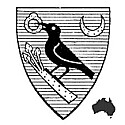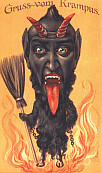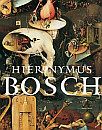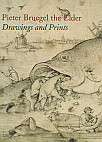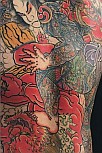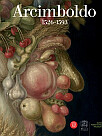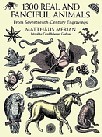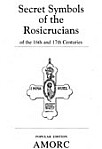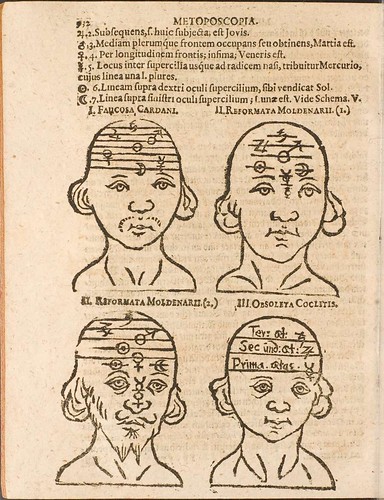
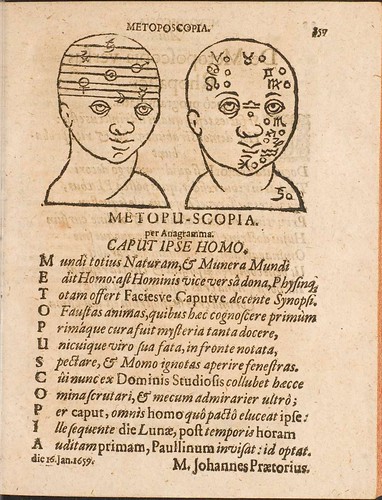
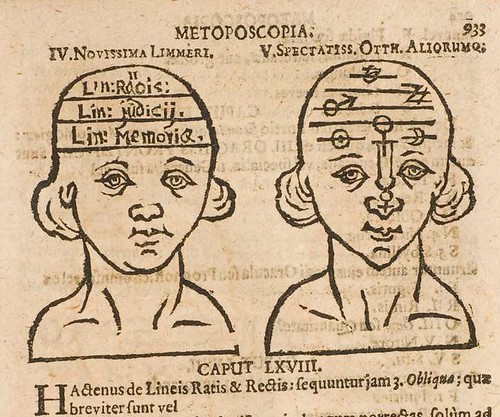
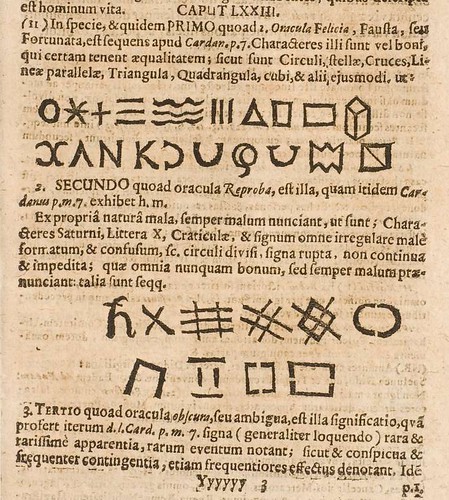
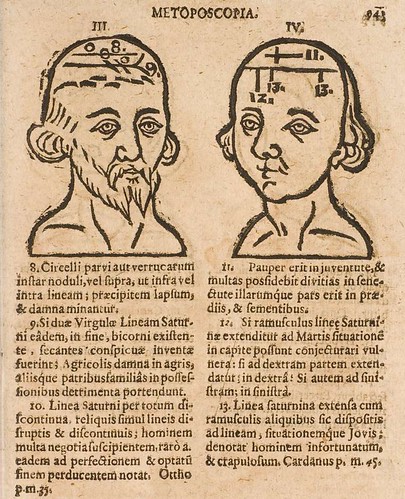
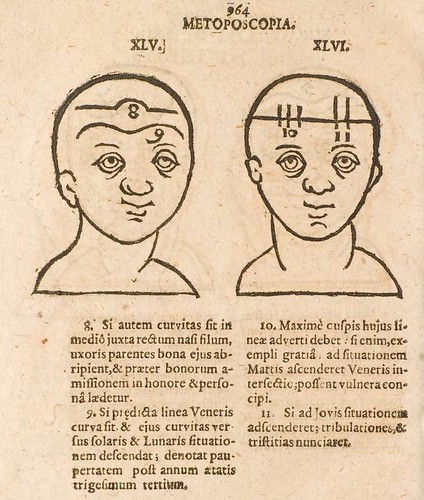
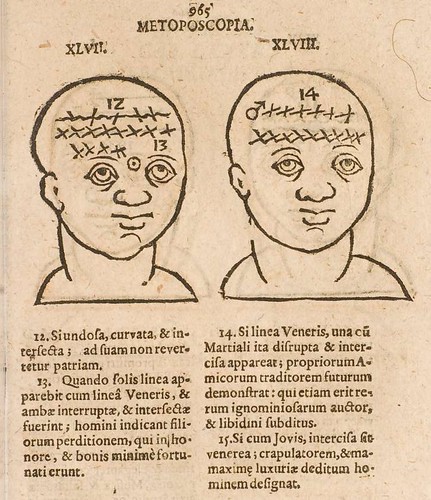

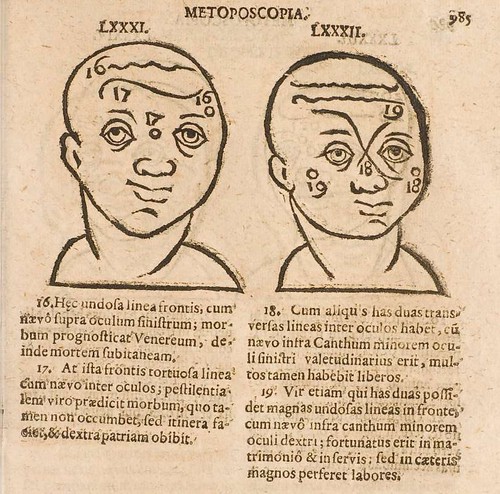
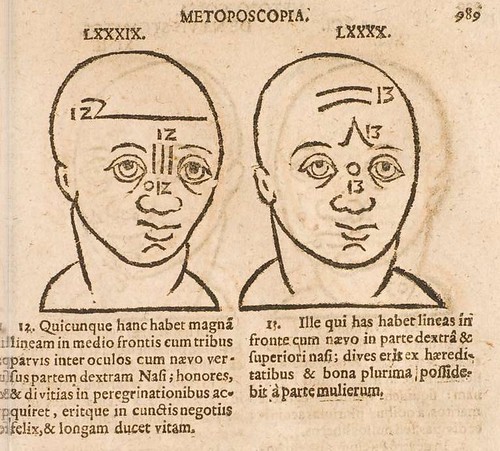
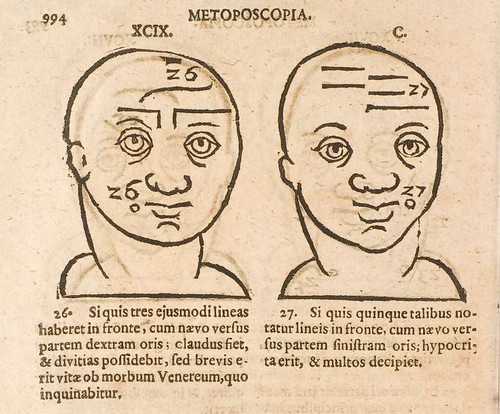
No, we aren't seeing a parade of the local parkour* club membership rejections. These images are, rather, attempting to convey the important forehead topography that one ought to be able to recognise to assess a subject's disposition and future.
Metoposcopy is a pseudo-science (being generous about it) that was developed in the 16th century by the Italian Renaissance mathematician, Gerolamo Cardano (Jerome Cardan), although his treatise on the subject wasn't published until 1658.
An individual's specific pattern of forehead wrinkles was used to analyse their character and, when combined with astrological interpretations, helped a clairvoyant make predictions about the person's destiny. There are apparently a number of works devoted to the subject from the 17th century and this sort of foolish personality and divination technique is related, to an extent, to the 18th and 19th century obsessions of physiognomy and phrenology.
The images above come from a 1661 book, 'Centifrons Idolum Iani Hoc est: Metoposcopia Seu Prosopomantia' by Johannes Praetorius, available from the Wolfenbuettel Digital Library. These constitute perhaps half of the illustrations in the book.
The images below, including the frontispiece with a central metoposcopy facial figure, are also from a book by Johannes Praetorius, but it deals more specifically with chiromancy or palm reading. The book, 'Ludicrum Chiromanticum Praetorii' (1661), is online at Wolfenbuettel Digital Library. The frontispiece is definitely the best illustration in the book and there are further woodcut schematics of palms not shown here.
**(previously: Brain Maps)**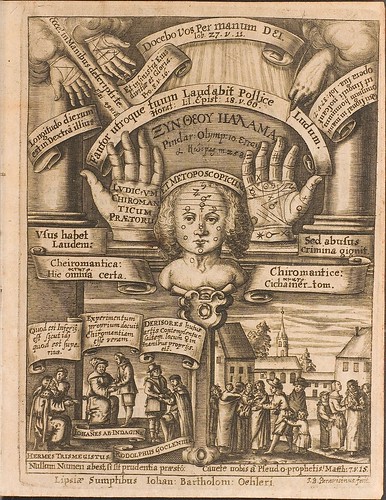
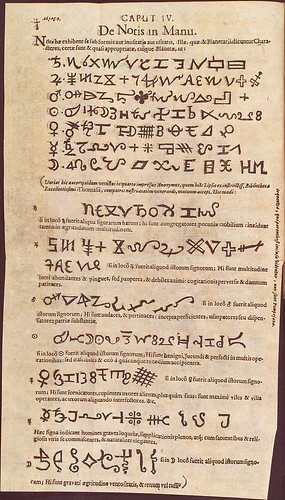
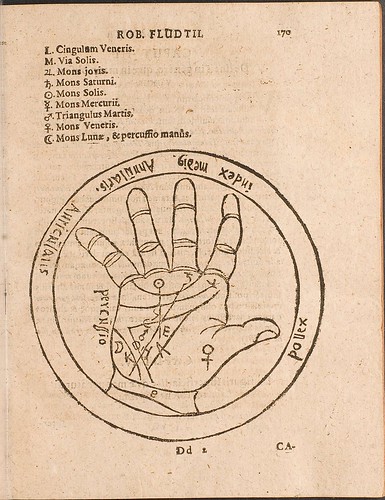

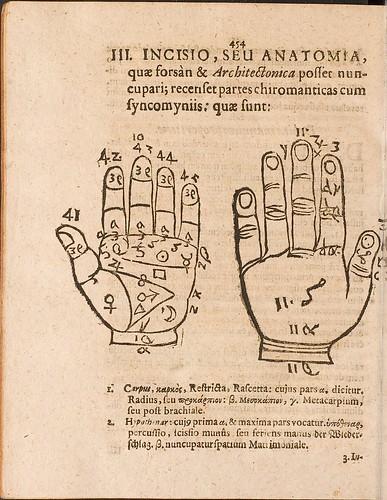
Friday, June 27, 2008
Metoposcopia
Wednesday, June 25, 2008
Lorenzo Homar
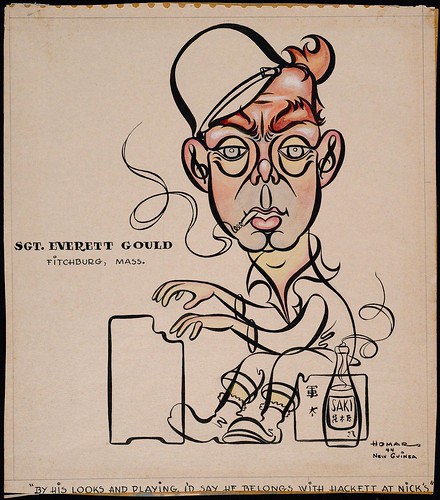
Sgt. Everett Gould, Fitchburg, Mass.
Homar 44 New Guinea
"By his looks and playing, I'd say he belongs with Hackett at Nick's"
(Pen and ink, watercolor, pencil on paper)

Sgt. Homar
Convoy to Philippines
-44
"H" minus "5 or 6". G.I's last shower + shave with (modern conveniences)? before landing
(charcoal on paper)
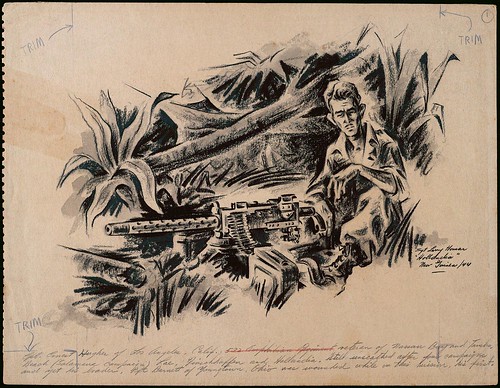
Sgt Larry Homar
"Hollanchia"
New Guinea / 44
Cpt. Ernest Hughes of Los Angeles, Calif, veteran of Nassau Bay and ?Tambin Beach (?Salamana Campaign) Lae, Finschhaffen(?) and Hollanchia. Still unscathed after four campaigns and yet his loader, Pfc Barnett of Youngstown, Ohio was wounded on this mission, his first.
(charcoal on paper)

Los Renegados: Bats
(woodcut, 1963)
(woodcut, 1963)

Book illustration IN:
'The Three Wishes; a Collection of Puerto RicanFolktales'
by Ricardo E. Alegria, 1969.[Amazon]
'The Three Wishes; a Collection of Puerto RicanFolktales'
by Ricardo E. Alegria, 1969.[Amazon]

Acróbata Marroquí
{Moroccan Acrobats}
(Linocut, 1958)
{Moroccan Acrobats}
(Linocut, 1958)
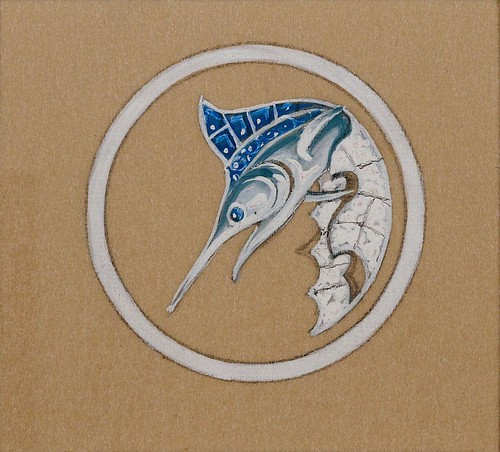
Cartier brooch design [Platinum setting with diamonds, swordfish motif]
(Pencil, gouache on paper, ~1937)
(Pencil, gouache on paper, ~1937)
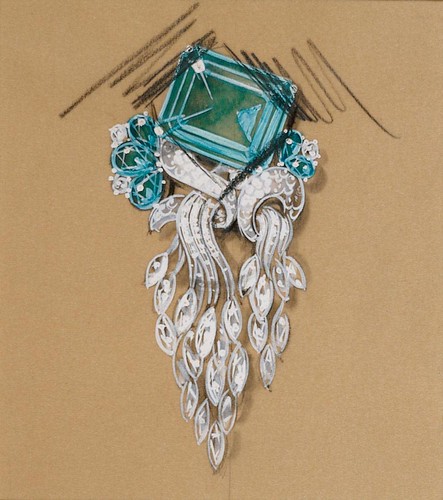
Cartier brooch design [Platinum setting with blue topaz and cascading diamonds]
(Pencil, gouache on paper, ~1937)
(Pencil, gouache on paper, ~1937)

Cartier earring designs [Six designs with sapphires, diamonds, and gold]
(Pencil, gouache on paper, 1937)
(Pencil, gouache on paper, 1937)
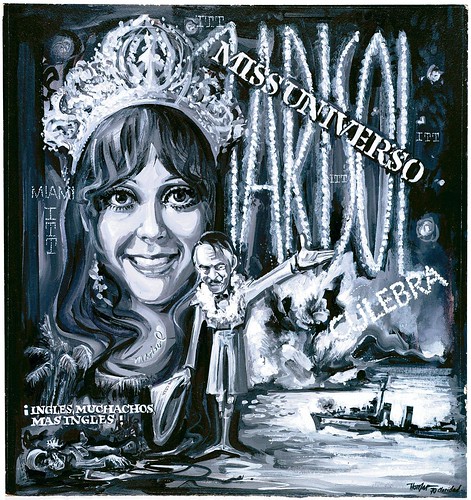
Inglés, muchachos, más Inglés!
{English, boys, more English}
ITT - Marisol - Culebra - Miami - Miss Universo
(Gouache on board, 1970)
{English, boys, more English}
ITT - Marisol - Culebra - Miami - Miss Universo
(Gouache on board, 1970)
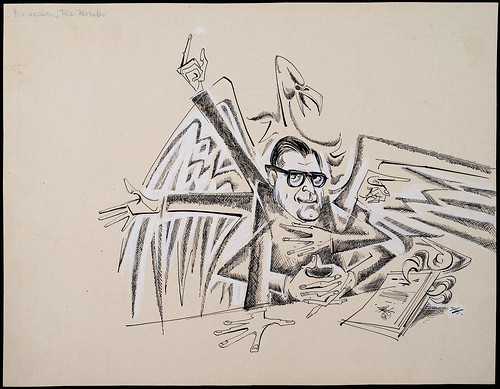
You answer, Mr. Morales
(Pen and ink, gouache on paper. Undated.)
(Pen and ink, gouache on paper. Undated.)

Composición Atonal
(Pen and ink on paper, 1962)
John Kennedy, (Pen and ink on paper, 1962)
*Almost certainly it is Luis Muñoz Marín, Governor of Puerto Rico.

Festival Casals [Studies for posters, conductor designs (one orange, one red)]
(Pastel on paper, 1957)
(Pastel on paper, 1957)

Pablo Casals [wikipedia]
(lithograph, 1955)
Inscribed in ink along right margin: Offset lithography BUT: The experiment went like this: I silkscreen black ink over an acetate sheet (clear). Then, over a light table I scratched this head of Don Pablo thus making a negative. When exposed over a sensitized offset zinc plate the positive was created. Therefore it is really an original print being that the transfer was not photographic. I drew with only my own pencil sketch for a model which was done mostly from memory. Casals as yet had not arrived in P.R. No photos available only a small program from Prades. Front view about the size of a dime(lithograph, 1955)
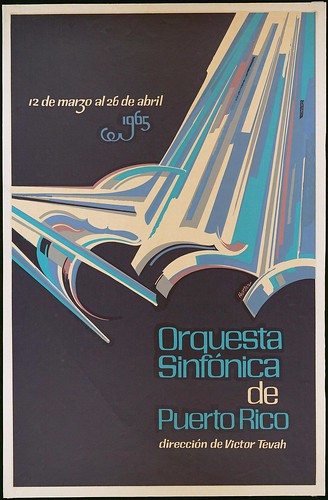
Orquesta Sinfónica de Puerto Rico, dirección de Victor Tevah
(Poster, 1965)
(Poster, 1965)
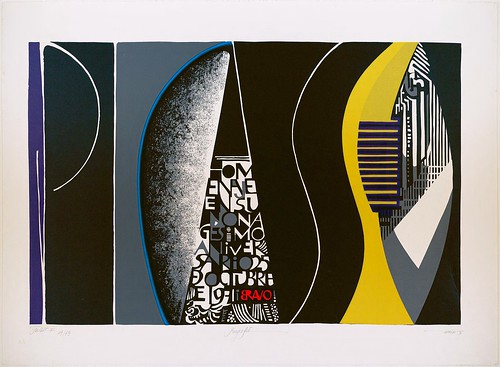
Gestalt I
(screenprint, 1971)
{This is listed as being related to an anniversary; I'm not sure what, specifically, it is meant to commemorate but see: 'On Max Wertheimer and Pablo Picasso: Gestalt Theory, Cubism and Camouflage' by RR Behrens, 1998.}(screenprint, 1971)
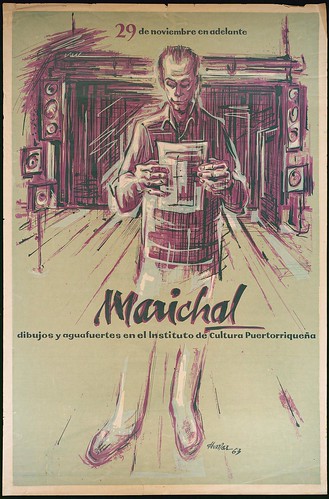
Marichal dibujos y aguafuertes en el Instituto de Cultura Puertorriqueña
(Marichal(?) drawings and etchings at the Institute for Puerto Rican Culture)
(poster, 1963)
(Marichal(?) drawings and etchings at the Institute for Puerto Rican Culture)
(poster, 1963)
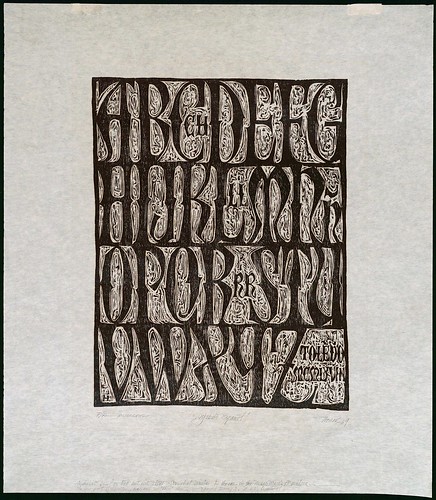
Alfabeto Español
(woodcut, 1969)
Inscribed in pencil, lower margin: Alphabet based on text cut into stone. Somewhat similar to the one in the Museo Mare(woodcut, 1969)
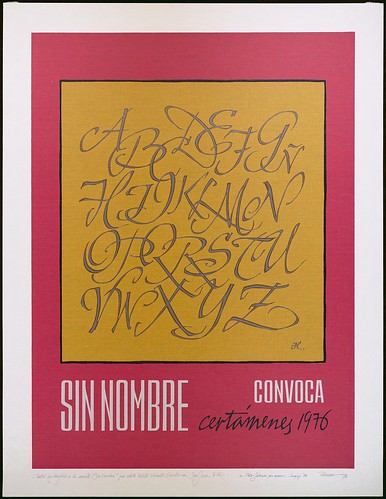
Sin nombre convoca certamenes
(Poster for the benefit of the Puerto Rican journal, 'Sin Nombre' - 'no name / unnamed', 1976)
475 aniversario del descubrimiento de Puerto Rico [copy 2]
(Poster for the 475th anniversary since the discovery of Puerto Rico, 1968)
(Poster for the 475th anniversary since the discovery of Puerto Rico, 1968)

Qué hago yo aquí?
{What am I doing here?}
(Gouache on paper, 1972)
Lorenzo Homar receiving a PhD from the InterAmerican University in Puerto Rico{What am I doing here?}
(Gouache on paper, 1972)
[all images © the Estate of Lorenzo Homar]
Lorenzo Homar (1913-2004) was born in Puerto Rico but moved to New York City with his family when he was fifteen. Financial pressures forced him to leave school early for a textile factory job and he obtained some tutoring for his emerging interest in art. He moonlighted as a vaudeville gymnast.
Homar found a position with Cartier Jewellers in 1936 as an apprentice designer, where his on-the-job training in drawing and engraving was augmented with night classes in typography, painting and graphic design at the Pratt Institute.
In the Second World War Homar enlisted and served in the Pacific in New Guinea and he was awarded a Purple Heart following injuries received in action in the Philippines. His draughtsman skills were put to good use in mapmaking for the Army Intelligence Unit and his military sketches were published in a number of journals in the United States.
After the war, Homar returned to Cartier, took more art classes in Brooklyn and continued his habitual tumbling and acrobatic practice on the beach at Coney Island. There are more than a few prints devoted to athletic pursuits among his portfolio.
He returned to Puerto Rico in 1950 where he co-founded the Puerto Rican Arts Centre with a group of fellow artists. A governmental Directorship of Community Arts Education followed and he also established a graphic arts workshop. Homar excelled at screenprinting in particular and he established his own studio in 1975.
"Homar is credited as the artist most responsible for promoting printmaking in Puerto Rico. He trained other important artists, such as Antonio Martorell, José Rosa and Myrna Báez, and ran workshops at Cali in Colombia and in Havana, Cuba, helping to extend his influence further afield in Latin America. While serving as director of the graphic workshop of the Instituto de Cultura Puertorriqueña, the most important in Puerto Rico, from 1957 to 1970, he produced more than 500 posters and several portfolios of screenprints, such as Casals Portfolio (1970), which were admired for their distinctive style and sophisticated technique. As many as 30 to 40 manual runs were used in the making of each poster, which were characterized also by an expressive use of typography and textures.
Screenprinted posters, woodcuts, engravings, political cartoons, book illustrations, logos and stage designs all feature in Homar’s prolific production. From 1964 to 1972 he produced a series of monumental woodcuts in which he combined political or poetic texts with highly evocative images and expressive rhythmic incisions. Assimilating aspects of American Realism and German Expressionism, he also continued producing paintings on social realist themes rendered in a neat, meticulous style that suggests a printmaker’s rigour and precision." [Mari Carmen Ramírez from Grove Art Online {via Zen Studio}]
- Princeton University Library has a collection of 350 posters, prints, designs and sketches by Lorenzo Homar from where all images above were obtained. [nb. I've done a little background spot cleaning here and there and tweaked the colour/brightness in some of the images posted here]
- Wikipedia article
- The quartet image below comes from a selection at Puerto Rican Posters.
- L'Atelier have a small collection of Homar prints.

Tuesday, June 24, 2008
Décorations Polychromes
Ceiling design from the Palazzo Scrofa-Calcagnini in Rome*
(*Does anyone know another name for this? There are scant details online and what there is suggests it's in Ferrara.)

Mosaic detail from the Bardo Museum in Tunis (plate by Homolka)
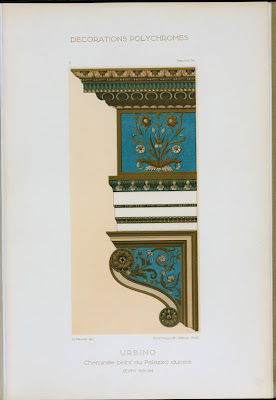
Detail of painted fireplace ornament from Palazzo Ducale in Urbino
- Wikipedia
- Flickr (ducale + urbino)
- Official site (in Italian)

Lunette decoration from Palazzo Ducale in Mantua, Lombardy

Correggio's 1518 vault fresco in St Paul's convent (Camera di San Paolo) in Parma
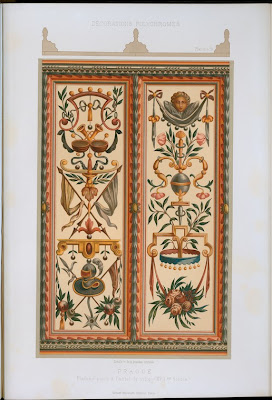
Ceiling painting from the Hotel de Ville in Prague
(I presume this is from the new town hall building [Novoměstská Radnice] but I'm not sure. Anyone?)

Giulio Romano's 16th century dome painting in Villa Madama in Rome

Design of the vault cap in Fugger House, Augsburg
The Fugger family were similar to the Medicis of Florence: rich and influential patrons with extensive property, so it's hard to identify the specific building containing the ceiling vault in the above lithograph.

16th century panel design from Trausnitz Castle, Landshut, Bavaria
- Burg Trausnitz homepage (more in the German section)
- Pbase photo gallery by Scott
- Wikipedia / Bavarian Palace Dept.

Frieze and column decoration details from Great St Martin Church in Cologne
- Wikimedia photo gallery
- Wikipedia (in German) [translation]

Ceiling painting from Uffizi Gallery in Florence
- Official site (in English)
- Wikipedia

Door and surround from the room where
Louis XIII was born at Fontainebleau Palace
Louis XIII was born at Fontainebleau Palace
[click images for larger versions; mouseover for original French captions; English captions are my approximatations]
In his 2-volume work, 'Décorations Polychromes', artist Ernst Ewald assembles what amounts to a grand tour through some of the most important elements from the decorative arts output of the Renaissance, found in buildings from Europe (and North Africa).
The one hundred and forty sumptuous illustrations are chromolithographs and the array of colours and tones present suggests that this was a complex and protracted printing process. The work was published somewhere between 1889 and 1896, perhaps aimed at a declining revivalist market (see: neo-Renaissance), or simply as an up-to-date record using the most realistic means of reproduction then available.
- The great majority of the illustration plates from 'Décorations Polychromes' are available from the NYPL Digital Gallery.
- Ernst Ewald at Wikipedia (in German) [translation]
Same ballpark, different tangent: the rich 'Imago Urbis: Giuseppe Vasi’s Grand Tour of Rome' site from the University of Oregon is well worth a timesink:
"Giuseppe Vasi’s Grand Tour presents an innovative geo-database (geographic database) and website that references the work of two 18th century masters of Roman topography: Giambattissta Nolli (1701-1756), who published the first accurate map of Rome (La Pianta Grande di Roma, 1748); and his contemporary and Giuseppe Vasi (1710-1782), whose comprehensive documentation of the city and its monuments, especially in Delle Magnficenze di Roma antica a moderna, published from 1747-1761, establishes him as one of Rome’s great topographers."

